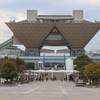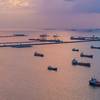Inside NYK's World-First Autonomous Ship Trial
NYK has conducted the world’s first Maritime Autonomous Surface Ships (MASS) trial performed in accordance with the IMO’s Interim Guidelines for MASS trials* as the company begins tests to realize its target of manned autonomous ships** for safer operations and a reduction in crew workload.
Iris Leader, a large NYK-operated PCTC having a gross tonnage of 70,826 tons, was navigated day and night using the Sherpa System for Real ship (SSR) navigation system from September 14-17, 2019, performing typical duties during navigation, which included Japan’s coastal area but excluded bays.
During the trial, the SSR’s performance in actual sea conditions was monitored as it collected information on environmental conditions around the ship from existing navigational devices, calculated collision risk, automatically determined optimal routes and speeds that were safe and economical, and then automatically navigated the ship. Using data and experience gained through this trial but not obtainable through onshore simulators, NYK was able to ensure the feasibility of the SSR and its benefit for safe and optimal operations. This trial was a big step toward realizing NYK’s goal of manned autonomous ships.
NYK will analyze the data and continue to develop the SSR into a more advanced navigation-support system by making adjustments to the difference between the optimal course derived by the program and that determined by professional human judgment.
The SSR verified by this trial will also be applied to future coastal ships, which currently face serious crew shortages. The SSR can become a basic technology for remote and unmanned navigation, contributing to social issues through business that embodies NYK’s “Bringing value to life” mission.
The NYK Group will accelerate its digitalization efforts based on the company’s medium-term management plan “Staying Ahead 2022 with Digitalization and Green,” and will conduct development and demonstration tests of advanced operational support technologies to realize manned autonomous ships.











